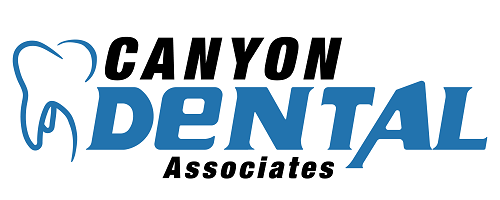Crafting Perfect Smiles: Exploring Braces with Canyon Dental Associates
Braces: Everyone wants to have a beautiful smile filled with straight, attractive teeth, but few people are lucky enough to be born with perfectly aligned teeth.
What you may not realize is that straightening your teeth also helps to improve your health. When your teeth are not aligned properly and are crowded in too tightly or are twisted or overlapping, it’s challenging to clean them well, and the result can be decay or gum disease.
Why Chose an Orthodontist?
Orthodontists such as Dr. Rashid Kamdar is a qualified dentist who has had an additional two years of education and specialized training in tooth movement and the guidance of facial development. Dr. Kamdar finished his dental school at the prestigious UCLA school of dentistry and then attended a two-year specialized residency in Orthodontics and Dentofacial Orthopedics. Dr. Kamdar has been practicing in Southern California since 2009 and has helped create thousands of beautiful healthy smiles.
Child Orthodontics
We treat patients of all ages, and it is important to know that every patient we treat is different and has unique needs, so we design customized treatment programs that reflect those needs and build, over time, a healthy and beautiful smile.
Your general dentist may have you referred you to our office for an orthodontic evaluation or you may have found us on your own, concerned about the appearance of your child’s smile. Either way, we look forward to working with you and your child and answering your questions about orthodontics.
Does My Child Need an Orthodontic Evaluation?
We believe that every child should have an evaluation done by the age of 7 by Dr. Kamdar. Why? Because many problems can start early. By heading them off with conservative treatments known as Phase 1, when kids are young, we can avoid more complex or invasive treatments later. Not every child will need these interventions, of course, but if your child does, it’s much better to identify them now. Doing so could reduce the time your child spends in braces and eliminate the need for more costly interventions down the road.
What is the Best Age to get Braces?
There’s no single answer to this question. When you have your consultation with Dr. Kamdar he will be able to better address this question, along with other common concerns like the length of time your child will be expected to wear braces and treatment costs (and financial options).
Am I Too Old to Get Braces?
Absolutely not! You’re never too old to get braces. Braces can be done at any age, as long as the teeth and supporting gums and bone surrounding the teeth are healthy. It is important to see a general dentist ensure that you have no cavities and that there is no dental work that needs to be done prior to getting your braces. Having straight teeth is an investment in not only your smile but your health.
Common Reasons for Early Referrals for Braces
- Early or late loss of baby teeth
- A finger sucking or other oral habit
- Difficulty in chewing or biting
- Mouth breathing
- Crowding, misplaced, protruding, or blocked-out teeth
- Jaws that shift, make sounds, protrude or retrude
- Speech difficulty
- Problems resulting from biting into a cheek or the palate (roof of the mouth)
- Teeth that meet in an abnormal way or don’t meet at all
- A facial imbalance or asymmetry
- Grinding or clenching of teeth
- Types of Braces
The most commonly known orthodontic treatment are metal braces: an orthodontic appliance used to straighten teeth and correct bad bites. They may be used in conjunction with other orthodontic appliances prescribed to widen the palate or jaws or to shape the teeth and jaws. The average treatment time for braces is just over two years, but treatment time varies by the individual patient.
What are Fixed Braces?
Fixed braces, often referred to as traditional braces or orthodontic braces, are a common dental appliance used to correct misaligned teeth and jaws. They consist of various components that work together to apply controlled pressure on the teeth, gradually moving them into their desired positions over time.
Several types of fixed braces are available.
Traditional or metal braces (the most commonly needed orthodontic appliance)
Ceramic or clear braces are less noticeable than traditional braces because they tend to blend with the wearer’s natural tooth color. They are similar to conventional braces, but because they are made from porcelain, they are more expensive and susceptible to damage.
Removable
Removable braces (sometimes called aligners) are recommended when minimal teeth movement is needed and the patient is highly motivated to follow a strict regimen. Removable braces are worn 24/7 except for time eating and drinking, or brushing and flossing. This means that patients must be diligent about replacing their removable braces several times each day. If removable braces are worn less than required, treatment time will be longer and more costly
During the first week after being fitted with braces, or after having your braces adjusted by your Orthodontist, your teeth may hurt. This generally subsides within a week. Typically, discomfort can be managed with the use of an over-the-counter analgesic used according to the package label.
After the recommended treatment period, your Orthodontist will remove the braces and give you a retainer to wear for a prescribed time. The retainer helps keep your teeth from moving back to their original position.
